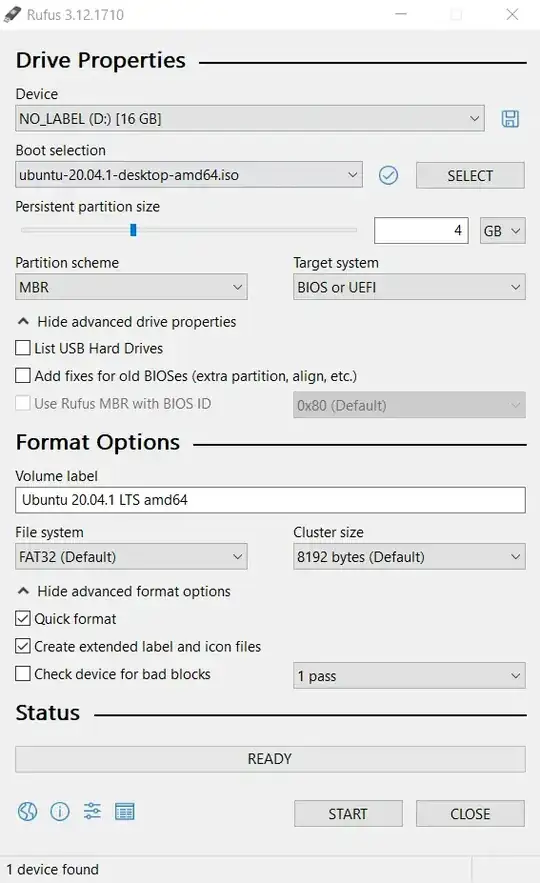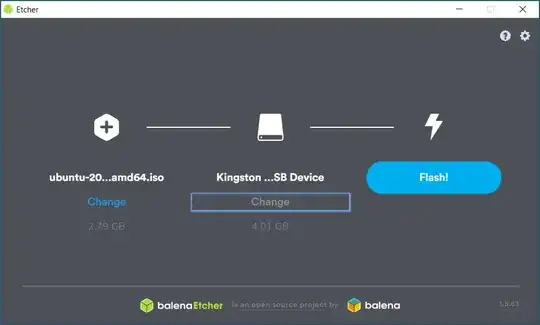Rufus Options
When I use Rufus, I just use default settings 90% of the time.
If I have more than one USB device plugged in, I use Device to select the correct drive. In Etcher it is also important to confirm that the correct drive is checked under Select target, Etcher can flash multiple USB's and HDD's at one time.
If I want a Persistent USB, that saves my changes, I adjust the Persistent partition size slider. (Persistent partitions do not work using Rufus with pre-19.10 Ubuntu). Etcher has no persistence option. Space not used by the OS and boot partition is wasted.
If I want to ensure the USB will only install in UEFI mode, (mainly for Dual booting), I click Partition scheme and select GPT. The Target system changes to UEFI (non CSM). All Etcher Ubuntu installs work in either BIOS or UEFI mode.
If I want to install to a USB hard drive, I check List USB Hard Drives. This can be very dangerous and lead to many destroyed vacation photos. Etcher has an option in settings, (upper right of the window), for Unsafe mode. Placing a check in this box will allow an install, not only to USB hard drives, but also to internal drives.
If I want to label the USB I select Volume label and add my choice or leave default to use the ISO name. Etcher just uses the full ISO name
I usually keep File system as FAT32 (Default). NTFS allows files over 4GB. Using FAT32 or NTFS allows data to be written to the OS partition and read from the cdrom folder while running, Etcher clones the ISO or IMG file and uses the file systems from them, ISO9660 in the case of Ubuntu. All space on the drive that is not used for OS or boot is wasted.
I have never found a reason to touch Cluster size.
If I want to zero the USB to ensure there are no artifacts from old installs, I remove the check from Quick format. This may greatly increase creation time.
I leave Create extended label... checked. Not checking Create extended label..., uses an abbreviated Volume label.
I do not Check device for bad blocks unless the drive has been giving me problems.
I leave everything not mentioned above per default.
After pressing Start, if persistence is not chosen, there is an option to Write in ISO image mode or Write in dd image mode. The latter will clone a Ubuntu ISO as ISO9660, the same as Etcher uses.

